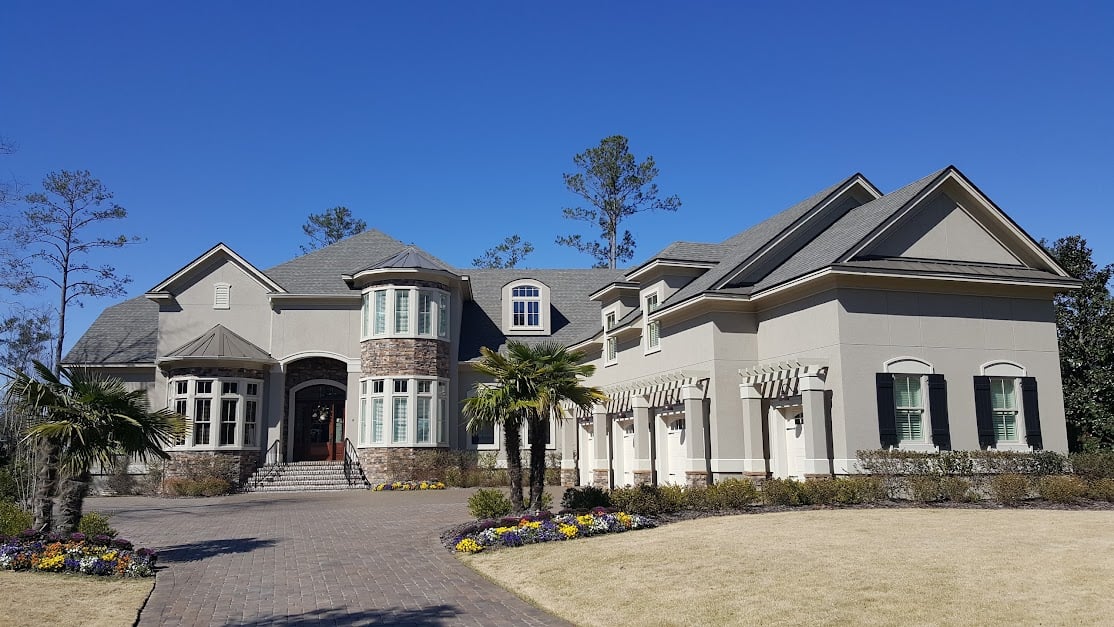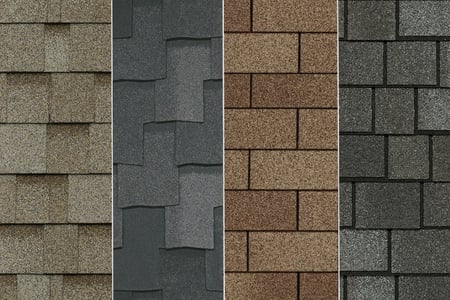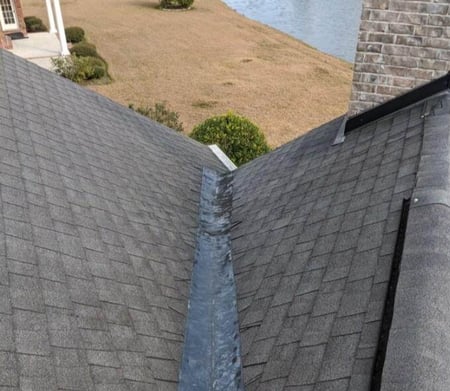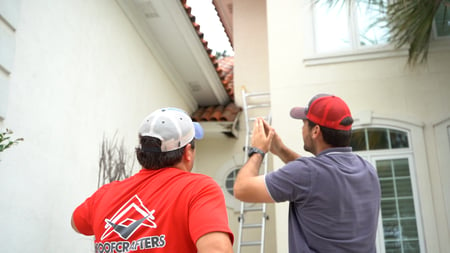Roofing 101: Understanding Roof Terminology
May , 2024 | 9 min. read

When it comes to understanding your home, one aspect that often gets overlooked is the roof. It’s easy to take for granted that layer of protection over our heads until something goes wrong, right?
Listen, at RoofCrafters, we get it. There are so many other home improvement projects we enjoy more than roof repairs or replacements, like picking out new flooring or painting the living room walls! However, we still have to make sure we’re taking care of the not-so-fun parts of our homes, too.
So, whether you’re a homeowner or just someone curious about construction, knowing a bit about roofing lingo can be invaluable. That being said, let’s embark on a crash course in roofing 101, so you can be prepared before your next repair or replacement. Let’s begin!
The Basics: Roof Components

1. Shingles
Shingles are the outermost layer of the roof, providing both protection and aesthetic appeal. They come in various materials like asphalt, wood, metal, or slate, each with its own advantages and costs. Asphalt shingles, for instance, are the most common due to their affordability and durability.
2. Underlayment
Underneath the shingles lies the underlayment, a water-resistant barrier that adds an extra layer of protection against leaks. It’s typically made of felt or synthetic materials like polyethylene.
3. Decking
The decking, also known as sheathing, is the base layer to which everything else is attached. It’s usually made of plywood or oriented strand board (OSB) and provides structural support for the roof.
4. Flashing
Flashing is metal strips installed around roof penetrations like chimneys, vents, and skylights to prevent water from seeping in. Properly installed flashing is crucial for maintaining a watertight seal.
Roof Shapes and Styles

1. Gable Roof
The gable roof is perhaps the most common roof style, characterized by its triangular shape with two sloping sides meeting at a ridge. It’s simple, economical, and allows for good ventilation. One of the advantages of a gable roof is its suitability for regions with heavy snowfall. The steep slopes allow snow to slide off easily, reducing the risk of structural damage. However, in areas prone to high winds, gable roofs may be more susceptible to damage if not properly braced.
2. Hip Roof
In contrast to the gable roof, a hip roof has slopes on all four sides, meeting at a ridge. This design offers greater stability and better resistance to strong winds. Hip roofs are also popular in areas prone to hurricanes or typhoons due to their aerodynamic shape, which helps deflect wind and reduces uplift forces on the roof. Additionally, hip roofs provide more attic space compared to gable roofs, making them suitable for homeowners looking to maximize their storage or living space.
3. Gambrel Roof
You might recognize the gambrel roof from traditional barns and Dutch Colonial homes. It features two slopes on each side, with the lower slope steeper than the upper one, creating additional space for storage or living quarters. Gambrel roofs are not only functional but also aesthetically pleasing, adding a touch of rustic charm to any home. However, one drawback of gambrel roofs is their vulnerability to high winds and heavy snow loads, especially if not properly braced or constructed with adequate support.
4. Mansard Roof
Similar to the gambrel roof, the mansard roof has two slopes on each side, but the lower slope is much steeper. This style maximizes living space and provides a distinctive architectural flair. Mansard roofs became popular during the Renaissance and Baroque periods in Europe and are often associated with grand palaces and elegant townhouses. While mansard roofs offer versatility in terms of interior space, they can be more expensive to build and maintain due to their complex design and the additional materials required.
Roofing Terms You Should Know

1. Pitch
The pitch refers to the steepness of the roof, usually expressed as a ratio of rise over run. A roof with a 4:12 pitch, for example, rises 4 inches for every 12 inches of horizontal distance.
2. Eaves
The eaves are the edges of the roof that overhang the walls of the house. They play a crucial role in directing water away from the building and can be adorned with soffits for added ventilation.
3. Fascia
The fascia is the vertical board that runs along the edge of the roof, supporting the bottom row of shingles and providing a finished look to the roofline.
4. Ridge
The ridge is the highest point of the roof where two sloping sides meet. Ridge vents are often installed along this line to allow hot air to escape from the attic.
5. Valley
Valleys are the internal angles where two slopes of the roof meet. Special flashing is installed in these areas to channel water away and prevent leaks.
6. Dormer
A dormer is a small structure with a window that projects from the slope of the roof, typically used to create additional living space or add architectural interest.
Maintenance and Repair

Understanding roof terminology is not just about knowing the parts but also about maintaining and repairing them. Regular inspection and maintenance can prolong the life of your roof and prevent costly repairs down the road.
1. Inspections
Schedule regular inspections, especially after severe weather events, to check for any signs of damage or wear and tear. Look for missing or damaged shingles, cracked flashing, or sagging areas. Additionally, inspect the attic for signs of water intrusion, such as water stains or mold growth, which could indicate a leaky roof.
2. Repairs
Address any issues promptly to prevent further damage. Small repairs, like replacing a few missing shingles or resealing flashing, can prevent leaks and extend the lifespan of your roof. However, for more extensive damage or if you're unsure about the extent of the problem, it's best to consult a professional roofer to assess the situation and recommend appropriate repairs.
3. Professional Help
While some maintenance tasks can be DIY-friendly, it’s essential to know when to call in the professionals. Roofing work can be dangerous, and improper repairs can do more harm than good. A qualified roofer has the expertise and equipment to safely inspect, repair, or replace your roof, ensuring that it remains in optimal condition for years to come.
The Value of Roofing Knowledge
While roofing terminology might seem overwhelming at first, with a basic understanding of the key terms, you can better communicate with roofing professionals, assess the condition of your roof, and make informed decisions about maintenance and repairs.
Whether you’re a homeowner or just someone interested in construction, knowing these roofing 101 tips can save you time, money, and headaches in the long run. So, next time you gaze up at your roof, you’ll see more than just shingles and nails; You’ll see the intricate system that keeps you safe and dry.
Now that you know the basics, and you’re ready to embark on your roofing journey, be sure to hit the “Schedule an Inspection” button down below, and one of our experts will assess the condition of your roof, while you can show off your brand new shop-talk skills!
My name is Cassie, and I’m the Content Manager here at RoofCrafters. I was born and raised in Chicago, Illinois, and made my way out to Florida post-college graduation. I’m incredibly passionate about writing and creating valuable content that helps others with the collaboration of my marketing team. When I’m not working, I enjoy shopping (a little too much), spending time at the beach, and reading!



